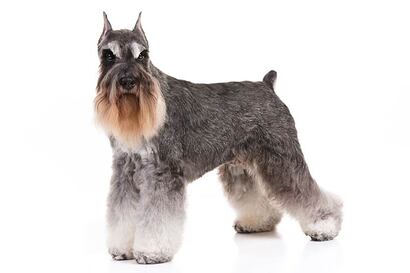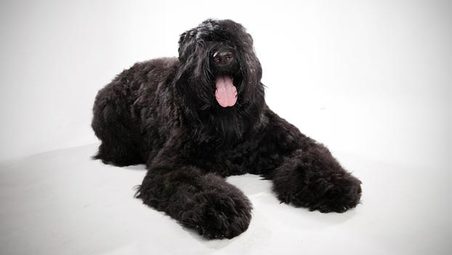For information and pictures of puppies bred at Opal Ridge Kennels,
please visit our page on Available Puppies
please visit our page on Available Puppies
Know Your Breed: Miniature Schnauzers
HEALTH CONCERNS:
Prone to liver disease, kidney stones, diabetes, skin disorders, von Willebrand's disease and cysts. Also hereditary eye problems. Gains weight easily, do not over feed. OFA-CHIC Health Testing Requirements SOMETHING TO THINK ABOUT: Life expectancy of The Miniature Schnauzer is about 15 years. It shows no signs of age until quite late in life. is a good dog for apartment life and will be calm indoors so long as it gets enough exercise. These energetic little dogs need daily, long, brisk, walks or jogs, and love play sessions off the leash. While out on the walk the dog must be made to heel beside or behind the person holding the lead, as in a dog's mind the leader leads the way, and that leader needs to be the human. Dogs that do not get to go on daily walks are more likely to display behavior problems. Teach them to enter and exit door and gateways after the humans. GROOMING: The wiry coat is not hard to groom, although it does need attention. Comb and brush daily with a short wire brush to prevent matting. If any mats appear they should be cut out. Grooming is recommended every 4 to 6 weeks. Trim around the eyes and ears with blunt-nosed scissors and clean the whiskers after meals. On pet dogs the coat is usually clipped short on the upper body and left somewhat longer on the under-parts, legs and head. Show dogs need to be hand stripped and trimmed instead of clipping. This breed sheds little to no hair and is a good dog for allergy sufferers. Know Your Breed: Black Russian Terriers
HEALTH CONCERNS:
Prone to hip and elbow dysplasia. X-raying the dogs is not common to the Russian breeders, so it's up to the breeders outside Russia to overcome this problem by targeted selection. If the ears are not well cared for they have a tendency to get otitis. OFA-CHIC Health Testing Requirements SOMETHING TO THINK ABOUT: The Black Russian Terrier will do okay in an apartment if it is sufficiently exercised. They are relatively inactive indoors and no matter how big your yard is they will be sitting at your front door waiting to come in. They love to live very close to their owner. They will follow you from one room to the other. Kept in a garden they will follow you from window to window and wait for you at the door. They need very close human contact. This breed does not do well living in a kennel; they must have close human contact to be happy. GROOMING: The weatherproof coat consists of hard, wiry, tight, close-lying, wavy hair which is about 1.5" - 4" (4 -10 cm) long. The BRT sports eyebrows and a beard. The upper-neck portion and withers suggest a mane. The undercoat is tight and well developed. Regular trimming 2-3 times a year is needed. Stripping is needed only if the coat is soft. Brush the BRT at least once a week. It is important to remove hairs from ear ducts and cut the hairs under the paws. The BRT sheds very little if it is regularly brushed. |
Are you interested in one of our puppies?
If you are interested in becoming a puppy parent, please fill out our
PUPPY APPLICATION
If you are interested in becoming a puppy parent, please fill out our
PUPPY APPLICATION
|
|
|
Call us: 423-625-1819
or email us: [email protected]
2983 Old Parrottsville Hwy
Parrottsville, TN 37843
or email us: [email protected]
2983 Old Parrottsville Hwy
Parrottsville, TN 37843



